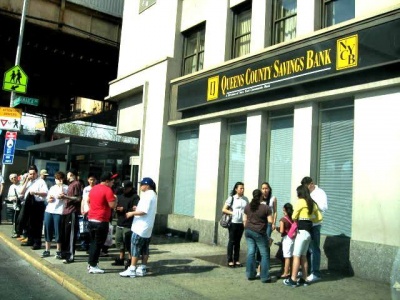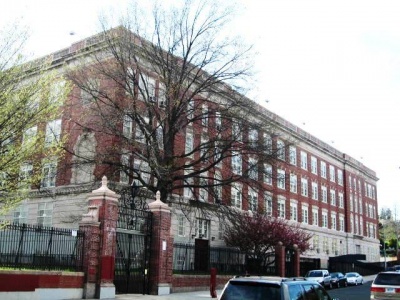Views
The Growth of Woodhaven
Tremendous growth in industries was stimulated following the Civil War. The effects of European immigration had intensely impacted Brooklyn, which expanded east and south and a perfect climate for real estate developers and land speculators. So during the1880s and ‘90s, Woodhaven had an outbreak of a whole rash of “parks”: Ozone Park, Simpson Park, Wyckoff Park, Woodhaven Park, Belmont Park, Columbia Park, Napier Park, Elderts Park and Chester Park. Today, Ozone Park, which was developed between 1882 and 1884, is the only surviving park. Eventually, real estate was the cause for breaking up of the old Union Course or racetrack property and by 1910 it was covered with private residences. [1]
Woodhaven continued its expansion with three small developments in 1891 along the north side of Jamaica Avenue and extending up to Forest Park. The first development “Union Terrace” extended from Dexter Park at the Brooklyn border to 100 feet east of 79th street, while the second development “Belmont Park” covered 89th and 90th streets and ran from Jamaica Avenue north to Forest Park. The third development “Columbia Park” began 100 feet west of 91st Street and extended to Woodhaven Boulevard. The New York Community Bank (NYCB), formerly Columbia Federal Savings Bank (CFSB), is currently located on this site at the intersection of Woodhaven Boulevard and Jamaica Avenue. [2]
Other developments in Woodhaven included the “Brooklyn Manor”, comprising 603 building lots of 20 x 100 feet, was bordered by Jamaica Ave. on the south to Forest Park on the north and from Woodhaven Boulevard on the west to about 100 feet east of 96th Street. In 1900, “Forest Parkway” came on stream north of Jamaica Avenue and its success led to the creation of three other developments: “Forest Park East”, “Forest Park West”, and “Forest Park South”. In 1907, “Elderts Park’’, a large irregular tract covered much of the western end of Woodhaven, was created by the Yeagley Realty Company. It was bounded by Drew Avenue along the Brooklyn border, Liberty Avenue, 81street, 101st Avenue, 85th Street, 101st Avenue, 85th street and Rockaway Boulevard and Atlantic Avenue. The tract was empty of houses at the time of World War 1. “Napier Park” was the last development in the central Woodhaven. It consisted of 193 lots in 20, 25, and 40 fts. [3]
For Woodhaven, transportation was essential for its growth, and on April 18, 1836, the first Long Island Railroad train arrived at Union Course. For 30 years, it fulfilled the needs of the village, where on December 18, 1866 the line was extended to Jamaica Avenue. Later, on December 17, 1887, the first electric trolleys began tumbling through Woodhaven with a steam engine and a generator. When the LIRR was controlled by the Brooklyn Rapid Transit System in 1893, it was modernized with standard-sized cars and better power. Trolleys, however, continued operating along Jamaica Avenue until November 30, 1947. [4]
Another factor involved in the growth of Woodhaven can be attributed to the Lalance & Grosjean Manufacturing Company. Lalance & Grosjean Manufacturing Company made metal cooking utensils. In 1863, Grosjean bought a factory in Woodhaven. In 1882, about half of Woodhaven’s residents were employed at the factory.[5]
References
- ↑ Seyfried, Vincent F. (1985). The Story of Woodhaven and Ozone Park Woodhaven: Queens Community Series
- ↑ Seyfried, Vincent F. (1985). The Story of Woodhaven and Ozone Park Woodhaven: Queens Community Series
- ↑ Seyfried, Vincent F. (1985). The Story of Woodhaven and Ozone Park Woodhaven: Queens Community Series
- ↑ Seyfried, Vincent F. (1985). The Story of Woodhaven and Ozone Park Woodhaven: Queens Community Series
- ↑ http://www.queenslibrary.org/index.aspx?page_nm=CL-Communityinfo&branch_id=WN

